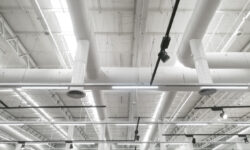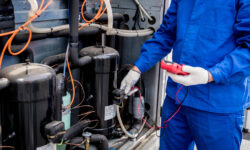Anyone who owns a commercial building knows that ductwork is an integral part of the property’s operations. In order to operate at maximum efficiency, your HVAC ductwork needs to be designed, sized, and installed correctly. Proper duct size is all too often an overlooked feature of commercial HVAC systems. The role that duct sizing and material play in maintaining a safe, comfortable environment should not be underestimated. Having the right size and material for your ducts will maintain comfortable conditions, improve indoor air quality, minimize energy losses, and lower your heating and cooling bills, as well.
Read more →Hospitals are high-sensitivity spaces that require a delicate balance of factors to maintain the health and comfort of patients. Because hospitals are such high-traffic areas, the most important thing is making sure that every room stays as clean as possible. Hospital HVAC systems are integral to preserving this balance. Every room is connected via the building’s HVAC system. That means every patient potentially shares the same air. Without specifically designed hospital HVAC systems, this would present a massive challenge. How do you keep the air clean for every patient when they all share the same air? The answer comes down to competent system design.
Read more →HVAC for veterinary clinics can be tough. Meeting the need for proper heating, ventilation, and air conditioning in animal hospitals is difficult on many levels, especially due to the extra dust, fur, and dander that can make its way through the systems. While commercial HVAC systems, in general, must combat many challenges, veterinary clinic systems are on an entirely different level.
Read more →Air compressors play important roles in many commercial and industrial systems. There are two main types: oil-free air compressors and oil-flooded air compressors. Both see wide use in a variety of industries, but which is suitable for your application? Is an oil-free air compressor best in every situation?
Read more →Medical gas systems in hospitals are, in a word, lifesaving. These assemblies supply piped oxygen, nitrous oxide, nitrogen, carbon dioxide, and medical air to hospital areas such as patient rooms, recovery areas, operating rooms, and more. Computerized alarm systems monitor gas flow […]
Read more →




